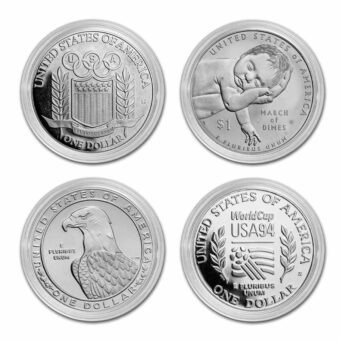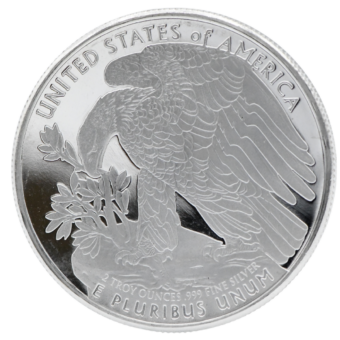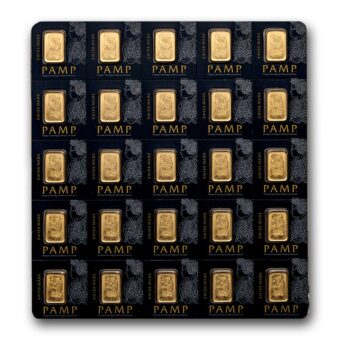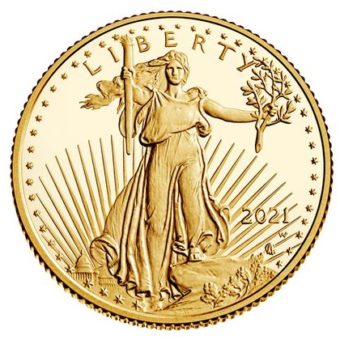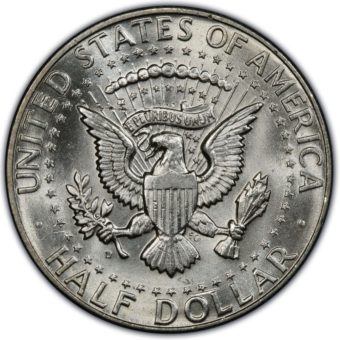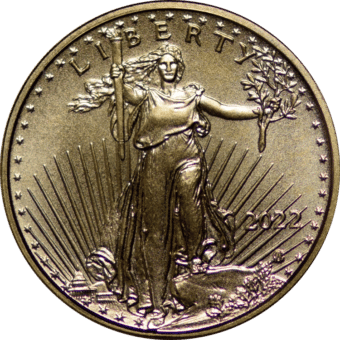In a week filled with global tension and shifting monetary signals, the Federal Reserve chose to stand firm—keeping interest rates unchanged and urging patience in the face of inflation and trade uncertainty. While precious metals saw brief surges and corrections, gold’s resilience continues to underscore its role as a stable store of value in a volatile landscape. Below, we break down the week’s developments, preview next week’s critical data, and explore what it all means for those focused on tangible wealth preservation.
A Daily Journey Through the Week’s Market
Monday – 6.16.25
Gold dropped $33.90 to $3,418.90 after reaching a five-week high overnight. Profit-taking and improving risk appetite weighed on the metal. Silver held steady at $36.40. Stocks climbed despite tensions between Israel and Iran. The G7 Summit began in Canada, with the Fed’s FOMC meeting underway—no rate changes expected.
Tuesday – 6.17.25
Gold eased further to $3,401.00 (−$16.40), while silver surged $0.857 to $37.30—a 13-year high. Technical buying supported silver, while gold saw continued pressure from improved sentiment. President Trump exited the G7 early amid escalating Middle East tensions, signaling potential military action. The Fed’s two-day meeting continued with no rate move anticipated.
Wednesday – 6.18.25
The Fed left rates unchanged. Gold edged up to $3,410.40 (+$3.50), while silver pulled back to $36.985 (−$0.166). Stock indexes rose modestly. Reports of possible U.S. military action in Iran elevated risk awareness but didn’t spark a market panic.
Thursday – 6.19.25
Juneteenth – Markets closed.
Friday – 6.20.25
Gold fell $23.20 to $3,364.00 and silver slipped $0.305 to $36.055 as traders took profits into the weekend. Powell held a firm stance on inflation despite political pressure for rate cuts. With mixed global signals and continued uncertainty around Middle East policy, market sentiment remained guarded.
Powell’s Message: Tariffs Take a Toll
In his latest remarks, Federal Reserve Chair Jerome Powell made it clear: tariffs aren’t just political tools—they’re economic burdens. While some indicators hint at stability, Powell emphasized the ongoing risks of future trade disruptions.
Fresh projections from the central bank reveal a split outlook:
- 10 officials favor two rate cuts in 2025
- Nearly as many anticipate no cuts
Powell noted that tariffs could reignite inflation even as growth slows—an echo of past economic traps. His comment that “someone has to pay” signals that cost pass-through to consumers is likely, especially in essential goods. The real risk: policy-induced stagflation. Unlike previous inflationary periods, today’s pressures are more rooted in legislation and geopolitical dynamics than in raw economic cycles.
Fed Maintains Rates, But Signals Caution
The Fed kept its benchmark rate at 4.25%–4.50%, but the underlying data tells a more cautious story. Growth projections were trimmed, inflation estimates were raised, and uncertainty continues to shape the central bank’s path.
Revised projections show:
- 2025 GDP forecast: 1.4% (down from 1.7%)
- 2025 core inflation: 3.1%
- 2025 unemployment: 4.5%
- Long-term Fed rate target: 3.4% by 2027
Despite calls for aggressive cuts, Powell and the Fed are taking a data-driven approach. Political pressure from figures like former President Trump has grown louder, but the central bank remains cautious. For now, the Fed is holding its position, waiting for a clearer picture on trade, inflation, and employment trends.
Gold’s Steady Course Amid Mixed Signals
Gold prices remained remarkably stable, trading just under $3,400 even as the Fed revised up inflation projections and scaled back growth forecasts. That resilience reflects gold’s unique role as a long-term hedge in an environment increasingly shaped by policy risk.
Spot gold last traded at $3,390.81, virtually flat on the day. Despite expectations of “higher for longer” interest rates, the metal held firm—a signal that market participants are looking beyond Fed projections and toward broader uncertainty.
Gold’s durability comes as no surprise. When faith in monetary policy falters and geopolitical risks rise, physical assets like gold and silver offer reliability. Though the path forward may be uneven, the underlying thesis for holding real money—unaffected by credit risk or digital decay—remains solid.
Next Week’s Key Events
Economic Calendar: June 23 – 27, 2025
Monday, June 23
- 9:45 AM ET – Flash U.S. Services & Manufacturing PMIs (June)
- 10:00 AM ET – Existing Home Sales (May)
Tuesday, June 24
- 9:00 AM ET – S&P Case-Shiller Home Price Index (April)
- 9:15 AM ET – Cleveland Fed President Beth Hammack speaks
- 10:00 AM ET – Consumer Confidence (June)
- 10:00 AM ET – Fed Chair Powell testifies to Congress
Wednesday, June 25
- 10:00 AM ET – New Home Sales (May)
Thursday, June 26
- 8:30 AM ET – Initial Jobless Claims (Week Ending June 21)
- 8:30 AM ET – Q1 GDP (Second Estimate)
- 9:00 AM ET – Cleveland Fed President speaks
- 10:00 AM ET – Pending Home Sales (May)
Friday, June 27
- 8:30 AM ET – PCE Inflation Index (May)
- 10:00 AM ET – Final Consumer Sentiment (June)
Impact on Precious Metals Markets
Monday – Flash PMIs: A slowdown in services or manufacturing may support metals, as signs of contraction heighten safe-haven interest. Strength in these reports could suppress demand by reinforcing confidence in economic resilience.
Monday – Existing Home Sales: Weak housing turnover may stoke slowdown fears, potentially lifting gold and silver. A rebound could weigh on metals as sentiment shifts toward growth.
Tuesday – Case-Shiller & Confidence Data: Elevated home prices signal sticky inflation, possibly triggering hawkish Fed tones—bearish for metals. Lower confidence numbers may support metals through a defensive trade.
Tuesday – Powell Testimony: A critical moment. If Powell softens his stance, gold and silver could rally. Hawkish or ambiguous comments may lead to short-term volatility.
Wednesday–Thursday – Housing & Labor: Weak new or pending home sales suggest declining momentum, which supports safe-haven demand. Initial jobless claims also serve as a key barometer—an uptick strengthens the gold case, while low claims could hurt it.
Friday – PCE Index: The centerpiece of the week. A low number may ease pressure on the Fed and support metals. A strong print could weigh on gold and silver, as it delays potential easing.
Friday – Final Consumer Sentiment: A pessimistic outlook tends to drive demand for hard assets. A positive revision might encourage short-term selling in precious metals.
Conclusion & Call to Action
This week showcased the resilience of physical assets in the face of economic crosswinds. With monetary policy remaining data-dependent, and the global landscape uncertain, gold and silver continue to serve as essential components of long-term financial security.
To explore how tangible assets can help protect your purchasing power, visit our website or contact us directly. Prime Assets is committed to helping you make informed, grounded decisions rooted in sound money principles.






